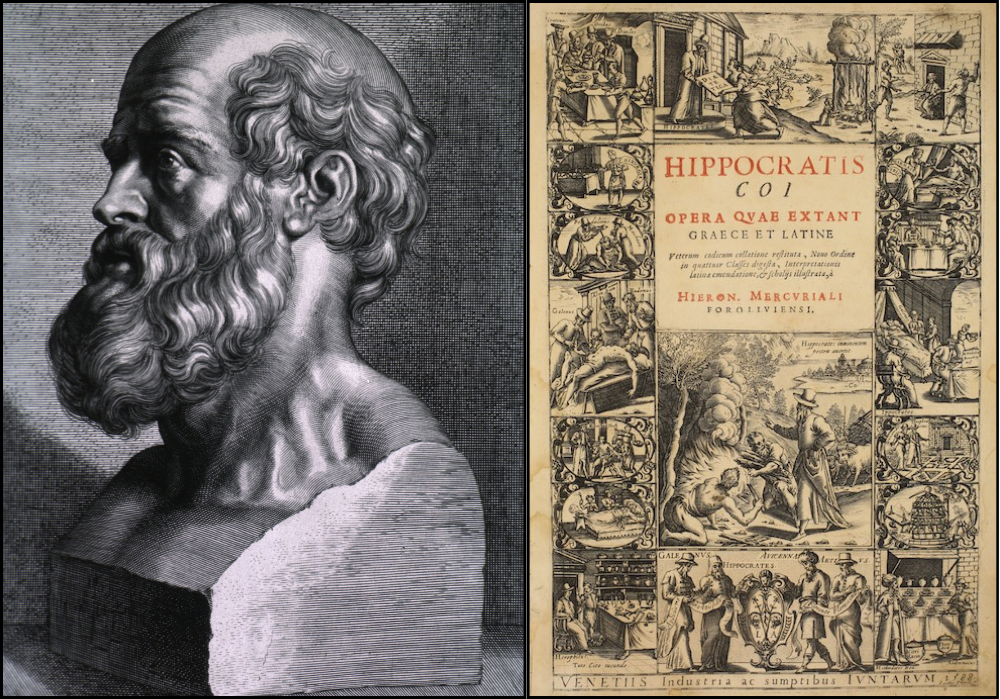(Left) Engraving of a Bust of Hippocrates, 1638 (Right) Anthology of Hippocratic Writings, 1588

(Left) Library of the University of Oklahoma (Right) National Library of Medicine
(Left) Born in 460 BCE, on the Greek island of Kos, Hippocrates is generally considered to be the “father of medicine.” A physician of almost mythic fame, it is challenging today to separate his actual body of work from the writings attributed to him or the texts that espoused his philosophy. This engraving by Peter Paul Rubens represents the supposed bust of Hippocrates.
(Right) Title page of a Venetian edition of an anthology of Hippocratic writings featuring various representations of the physicians of ancient Greece, like Hippocrates and Galen.

